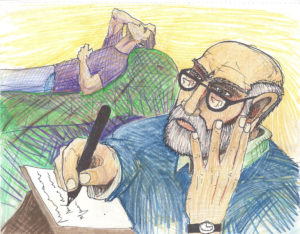I believe that all therapists enter the field wanting to do productive and healing work with their clients, and are equally dedicated to forging a relationship that’s safe and reparative. And much of the time, therapy truly is healing, supportive, and non-judgmental. Clients describe their therapists as compassionate and they emerge from the process with new tools, new insights, and a deeper sense of self-awareness. So why are there so many dissatisfied clients out there? People who describe very negative therapy experiences where they feel blamed, bullied, challenged in judgmental ways, misunderstood. They report feeling invalidated, emotionally betrayed, confused about boundaries, and shamed when they question the efficacy of therapy or the therapist’s modalities.
There can be many reasons why therapy isn’t productive. Some of those reasons relate to the clients. Their fear and anxiety about closeness collides with their desire for attachment and connection resulting in an “emotional rollercoaster,” lots of testing, an inability to sustain trust, or a disingenuous presentation of their thoughts, feelings and behaviors. But as clinicians we also need to be willing to look within ourselves and assess the extent to which a lack of progress, client ambivalence or premature termination is the result of our missteps. Therapists are human. And that means we can get triggered or overwhelmed. We can get more focused on talking and “giving advice” and less focused on listening with an open heart and an open mind. The agenda for treatment can become ours and not the client’s. We can inadvertently engage in power struggles, foster co-dependency rather than autonomy, fall short of providing a client with the tools they need for self-care, or disregard their feelings or self-destructive parts because they are too uncomfortable for us.
It takes a lot of humility to regularly check in with our clients, ask how we are doing and whether or not therapy is meeting their needs. And we have to do this in a way that doesn’t translate into clients “taking care of us” or reassuring us. We have to be willing to shift gears when the goals for therapy or the specific modalities we are using no longer resonate, become unsafe, or feel ineffective to the client. Rather than invalidating their perspective, we need to trust it and respond to it in non-judgmental ways. Consider the strategy of starting or ending a session by asking clients how the process is feeling for them, whether or not you are still “on the right track,” and if any aspect of therapy needs to be re-visited or re-negotiated. When we give clients the opportunity to weigh in throughout the course of treatment we are giving them the important experience of self-advocacy and will dramatically increase the likelihood that therapy will be a genuinely productive and healing experience for them.
What is your approach to checking in with your clients in order to learn how you are doing?



One thought on "How am I Doing?: Making Sure Therapy is Working for our Clients"